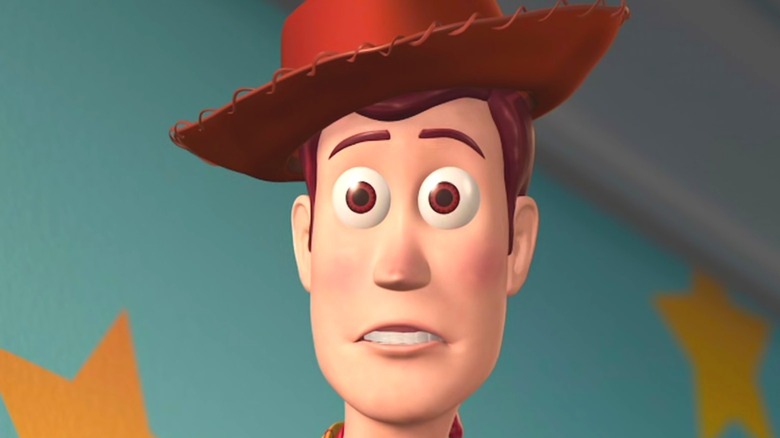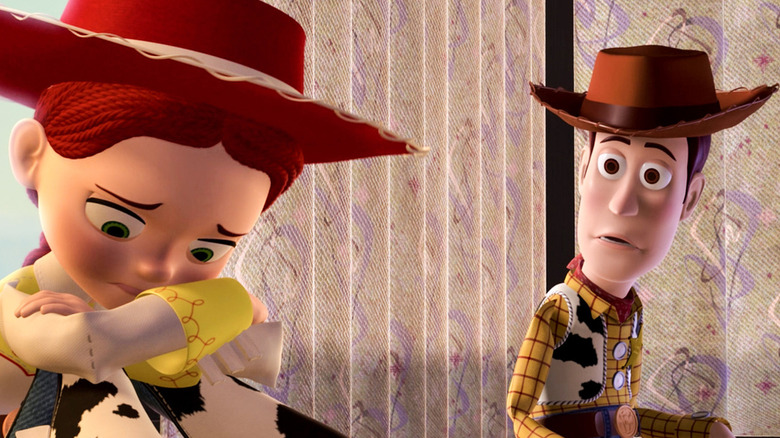How Disney Almost Destroyed The Toy Story Franchise
The House of Mouse has made some wild decisions over the years. Still, easily one of the boldest was taking the company into the era of computer-generated imagery, working alongside Pixar on "Toy Story."The groundbreaking beloved story about a cowboy and a space ranger touched down in 1995 and became a modern-day classic in less than a lightyear. While the effects may not hold up now, the story and the vocal talent behind it did enough to spark 3 sequels and a franchise that has earned over $3 billion at the global box office.
With success like this and a leading pair comprised of Tom Hanks and Tim Allen, it's almost unimaginable for any studio exec to not look at this as a surefire hit in theatres. However, that's just what almost happened to the "Toy Story" series, now viewed as one of the most successful movie franchises in Disney's history.
Disney planned 'Toy Story 2' to go straight-to-video
Long before their slice of movie monopoly comprised of stormtroopers and superheroes, the company set up Disneytoon Studios to churn out straight-to-video sequels of popular big-screen titles. Expanding on classics like "Peter Pan," "The Jungle Book," and the like, the VHS-based sequels were clearly of a lower standard in quality, as well as lacking core elements Disney fans sought out (songs, storyline, original voice cast, etc). One property that Disney had its eye on next in line for such treatment (and the contractual rights to do so) was a sequel to Pixar's CGI smash-hit.
With plans to give the project the well-known half-hearted Disneytoons polish, Pixar quickly stepped in to request they handle proceedings, no matter where the sequel ended up. Naturally, the CGI pioneers got ahead of themselves and into the process of making a Pixar-standard movie. With that, the 2 companies renegotiated, and Disney changed the trajectory of Buzz and Woody's second outing from the small screen back to the big. The choice, as history reveals, was the right one. After a few more trials and the film even going missing at one point, the final product ended up making $487 million worldwide, proving in the end, that theatres were the best place for toys to play in.

